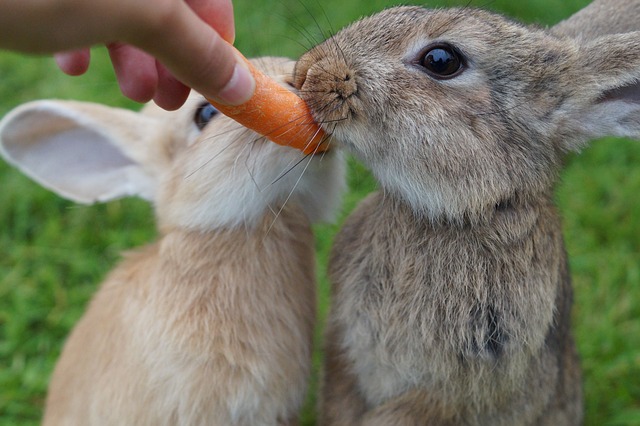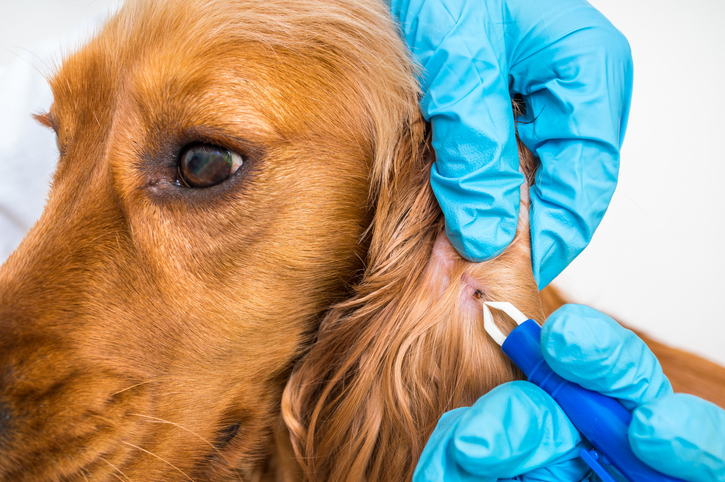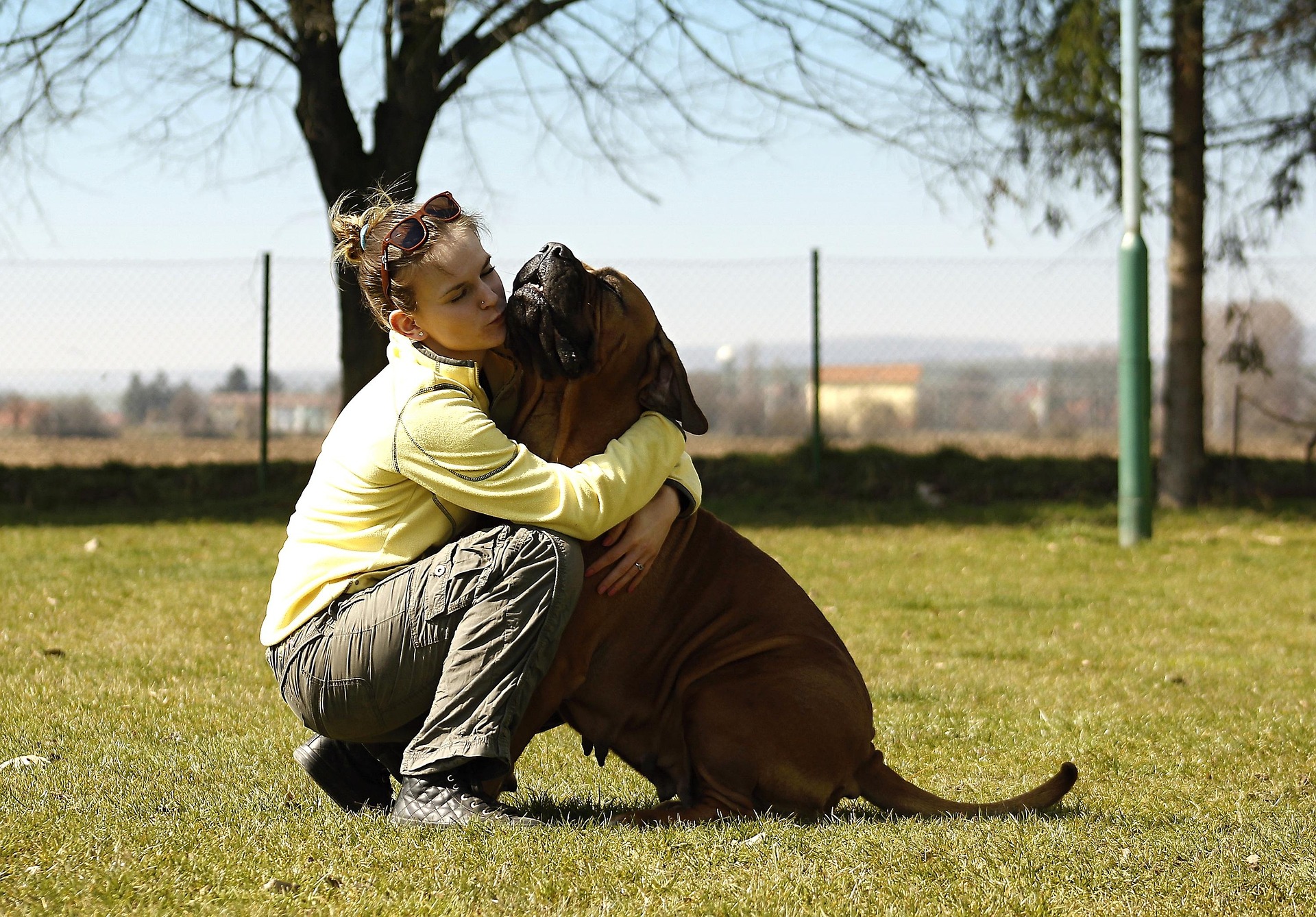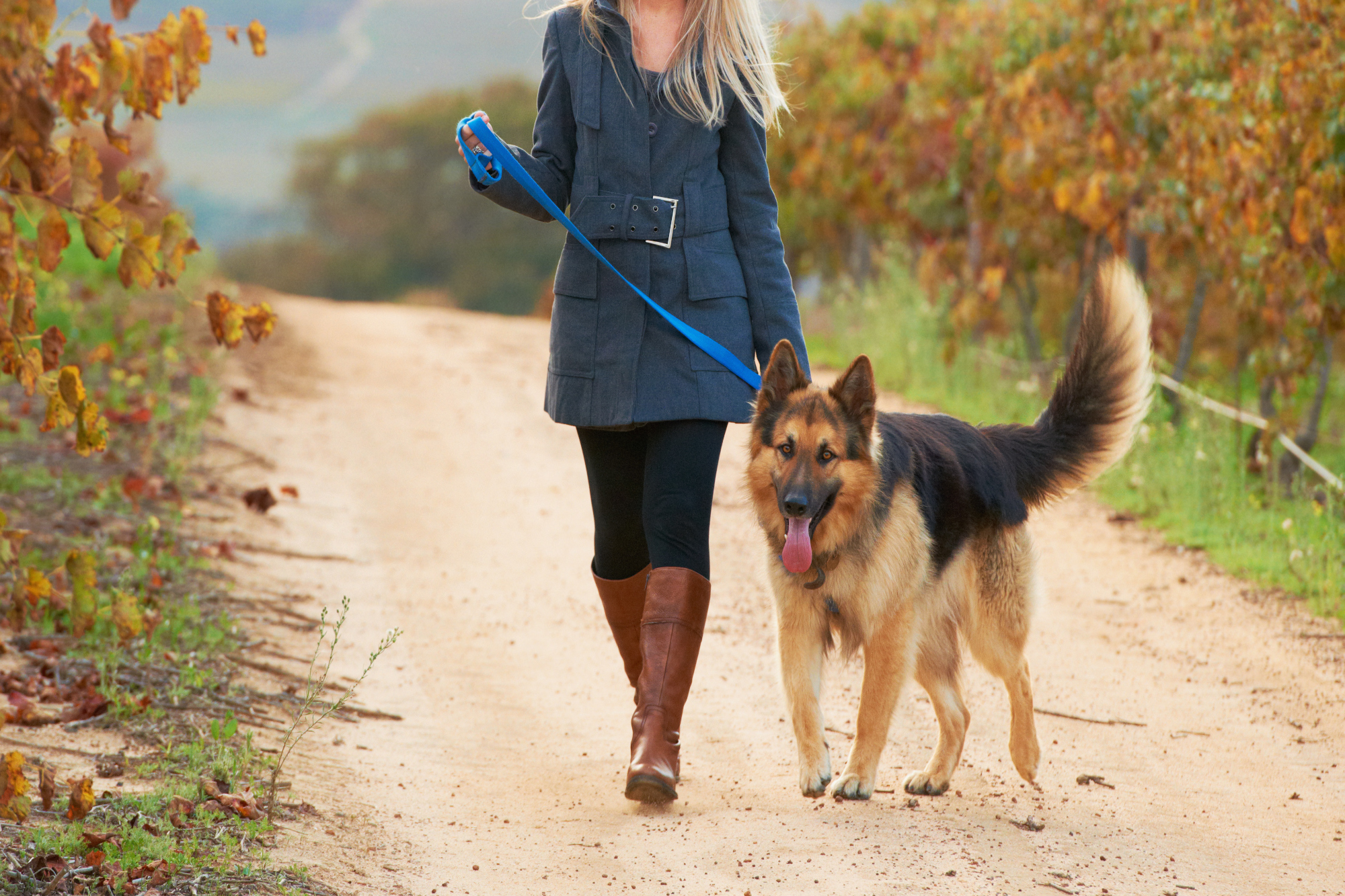If you’ve always thought that lettuce and carrots are enough to feed a bunny, you’d be wrong! Rabbit food must cater to their unique digestive system. Thankfully, it doesn’t require a lot of work to feed them. Keep these facts in mind and you’ll find it is easy to keep your rabbit healthy and happy with the right diet. Here is the lowdown on the “good, the bad, and the never, ever” foods for rabbits.
Bunnies Thrive on Good Rabbit Food
Bunnies love a good meal! The right combination of hay, vegetables, pellets, and treats will make pet bunnies very happy and healthy, control the growth of their teeth, and keep them satisfied. Remember, rabbits are herbivores, which means they should only be fed plants, never meat. Don’t forget that water is also an important item in a bunny’s diet. Easy access to water should always be available.
Hay
- Fresh hay is the most important item in a bunny’s diet. A constant supply of Timothy grass hay or oat grass hay should be available. Alfalfa hay is fine for young bunnies, but is only safe in limited supply for adults because of its higher sugar content and calorie count.
- Make sure the hay looks and smells fresh. It should not be kept so long that it turns brown, develops mold, and ceases to smell like grass.
- Hay provides the fiber necessary to prevent diarrhea, obesity, and hairballs, and assists with digestion. It also helps wear down a bunny’s constantly growing teeth and keeps their incisors healthy.
- Place hay in one end of the bunny’s litter box because bunnies like to munch on it when they are using the box.
- It is cheaper to buy hay from a farm than at a pet store, but whatever you buy should be stored in a dry place where circulating air can keep it from becoming moldy.
Vegetables
- Vegetables are the second most important part of bunny’s diet, and you can offer three different kinds in small quantities during each feeding.
- Veggies should be fresh and free of pesticides, and should be washed thoroughly.
- Green, leafy vegetables are good for bunnies. You can include arugula, basil, bok choy, broccoli leaves, carrot tops, celery, clover, collard greens, dandelion leaves, dill, endive, kale in small quantities, romaine and dark leaf lettuce, mint, mustard greens, parsley, and watercress.
Pellets
- Pellets should not be a mainstay of a bunny’s diet, but they can be offered in addition to fresh hay and fresh vegetables.
- The pellets must be high in fiber and low in protein and should not contain seeds, corn, or other foods high in calories.
- Bunnies will eat pellets only if they are fresh, and the amount in their diets should be reduced as they age.
- Pellets should be uniform in size, shape, and colour.
Treats
- Treats should be healthy foods too, and only given in very small amounts, such as when training (e.g. teaching your bunny to use the litter box).
- Good treats are small amounts of fruit such as strawberries, bananas, raspberries, pineapple pieces, apples without seeds, and melons. Veggie treats include a small amount of fresh carrot, pieces of green pepper, and Brussels sprouts.
- Make sure the fruits and veggies are thoroughly washed before feeding.
Bad Foods for Rabbits That Can Cause Problems
Some foods are difficult for rabbits to digest or cause tooth or tummy problems, or add calories and cause weight gains but are of no nutritional value.
- High-carbohydrate sugary foods like bread, pasta, crackers, cookies, cereal (like muesli), and potatoes are on the “bad food” list. They add calories and can cause digestive problems.
- Iceberg lettuce and other light coloured lettuce adds no nutritional value to a bunny’s diet and it can even contain lactucarium, which can be harmful in large quantities to rabbits.
- Silver beet (chard) causes colic and bloating, as well as cabbage, cauliflower, onion, and broccoli stems and tops.
- Walnuts and peanut butter are hard to digest and can cause tummy aches.
- Hamster food will add no nutritional value to your rabbit’s diet and neither will oatmeal.
- Don’t offer uncut celery.
Stay Away From the Dangerous or Never, Ever Foods
The downright dangerous foods should be kept out of bunny’s reach and never, ever offered:
- Both raw rhubarb and avocado are poisonous to bunnies.
- Yogurt drops can lead to enterotoxemia, a bad bacteria growing in the intestines, which can be poisonous. These drops are not an appropriate “treat” for bunnies.
- Chocolate is also not a treat and is as poisonous for bunnies as it is for dogs.
- Common houseplants are usually poisonous and all of them should be kept out of your rabbit’s reach, just in case.
A Feeding Guide for Bunnies
1. Amount of Food for 6-pound Rabbit
- Hay – Body–sized amount of 100% grass hay per day
- Vegetables – Head-sized amount or 1-2 cups per day
- Pellets – Small handful or ¼ cup (50 ml) per day
- Fruit – Maximum 2 tbsp per day, preferably less often
2. Life Stage Suggestions Per day
- At 12 weeks – alfalfa-based pellets and hay; veggies; teaspoon-sized piece of fruit
- At 7 months-1 year – 50% grass hay; ½ cup pellets; +/- fruit treat; green veggies
- At 1 to 5 years – 100% grass hay; 1-2 cups of veggies; 2 tbsp fruit or less; ¼ cup pellets
Encourage Natural Foraging and Chewing Behaviors
When you encourage your bunny’s natural foraging and chewing behaviors, it provides mental stimulation, occupies and entertains your little pet, promotes exercise, keeps teeth healthy, and is fun for both of you.
Aside from having unlimited access to hay and water, your bunny should be fed twice a day, preferably at times a rabbit would naturally like to graze and forage: morning and late afternoon or evening. Once you have established regular feeding times, try to stick to the schedule as rabbits like predictability and it reduces their stress levels.
Cardboard articles such as empty toilet tissue rolls or paper towel rolls or old phonebooks help keep bunnies occupied with chewing safe items. That way they will be less inclined to chew on your personal or household objects or unsafe things, which they will do if they can get their teeth on them.
Hang greens high on your bunny’s cage. This will force your pet to stand on his or her hind legs to reach them, which is good exercise.
Scatter greens or the daily ration of pellets around the cage or the room, and hide some food under boxes, or wrap it in brown paper, or tuck it inside a cardboard tube with shredded paper stuffed in the ends so that bunny has to hunt for some of his food.
Check at night to make sure bunny has enough hay in his cage to last until morning. You never know when the munchies will strike!
Bunnies thrive on good rabbit food that caters to their unique digestive systems. Remember the “good, the bad, and the never, ever” feeding rules and you will have a happy, healthy little bunny.
Creative Commons Attribution: Permission is granted to repost this article in its entirety with credit to Hastings Veterinary Hospital and a clickable link back to this page.






